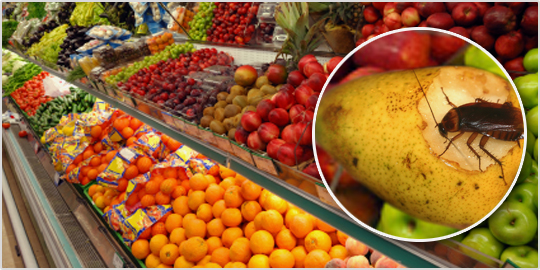
Commercial Stored Product Pests
Stored product pests are commonly found in warehouses, bakeries, packaging plants and supermarkets. The infestation can occur during manufacturing, while in transit, or even on the store shelf. They can infest most dried food products, such as flour, cornmeal, rice, crackers, cookies, dog food, etc.
Effective control is best achieved by understanding what the acceptable numbers of stored product pests present is within a structure.
Stored product pests can chew through most containers. Once in the product, it quickly contaminates the product and makes it unfit for sale or consumption. The infested product will most likely contain all stages of growth – egg, larval and pupal forms. Stored food pests are most evident when adults are seen crawling (beetle) or flying (moth) around in the commercial environment. Inventory rotation and storage in sealed containers are critical to controlling opportunities for infestation in the retail environment.
Inspection – It begins with a customer interview, followed by a thorough visual inspection for pest IDENTIFICATION and DETERMINATION of a course of action. In this situation, customer cooperation is critical to this effort. The mission of the pest professional is to locate the infestation and physically remove the product from the environment. The pest professional makes thorough notes of all findings, takes photos as needed, and always invites the customer to participate in the inspection process. He then develops a graph and site plan that outlines his findings.
Sanitation Recommendations – A great deal of the due diligence related to stored food pest control falls to the facility’s management team. Here are some recommendations to reduce conditions conducive to this pest:
- Inspect all incoming items for stored product pests.
- Actively engage in conscientious stock rotation (oldest product sold first).
- Promptly remove any infested and/or breached products.
- Promptly clean up dry product spills.
- For easy inspection and treatment, keep items on pallets that are at least 18″ away from the wall.
- Set environmental controls (temperature below 77 degrees) to discourage egg laying.
- Make sure that the building is well-maintained to reduce pest entry points.
- Mount exterior lighting away from the structure to avoid attracting insects.
- Provide adequate ventilation to reduce opportunities for moisture conditions in affected products.
- Make repairs/maintenance to window screens, air curtains, and/or any damage to the building structure that might provide pest access.
